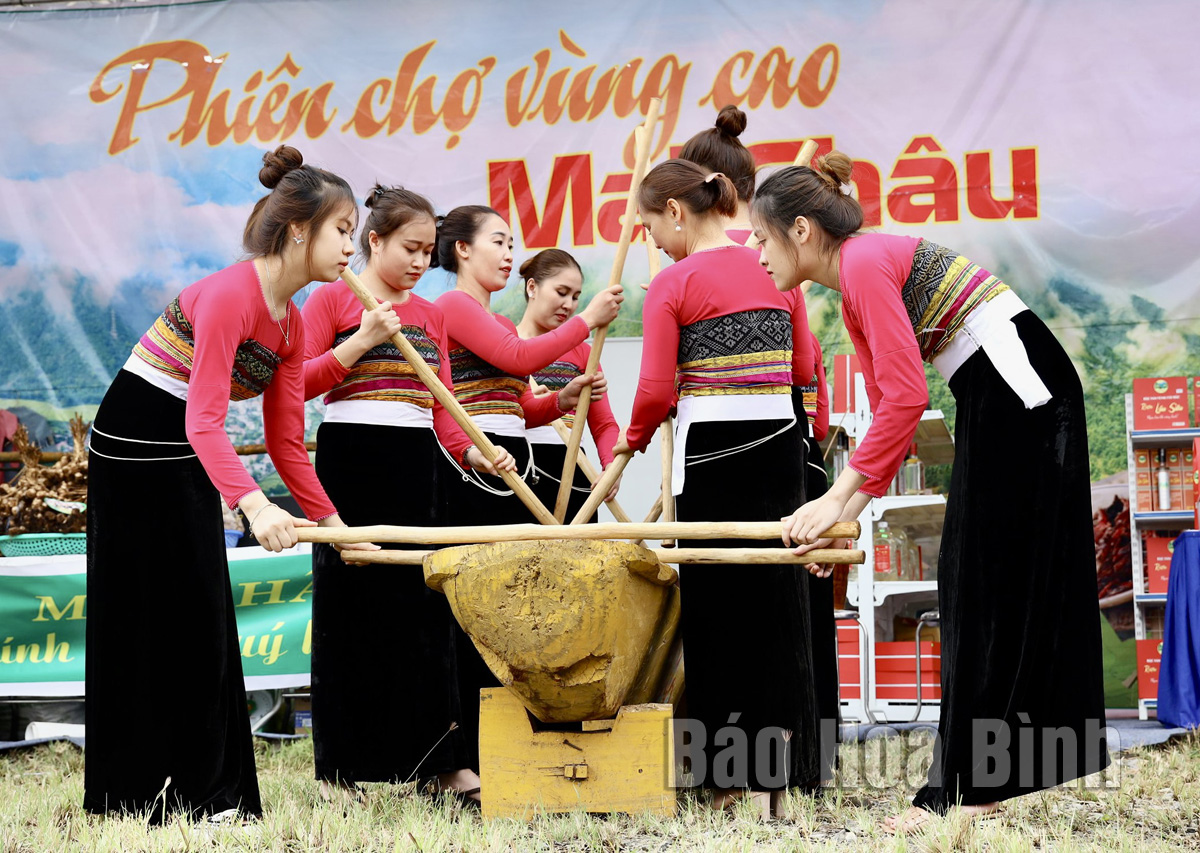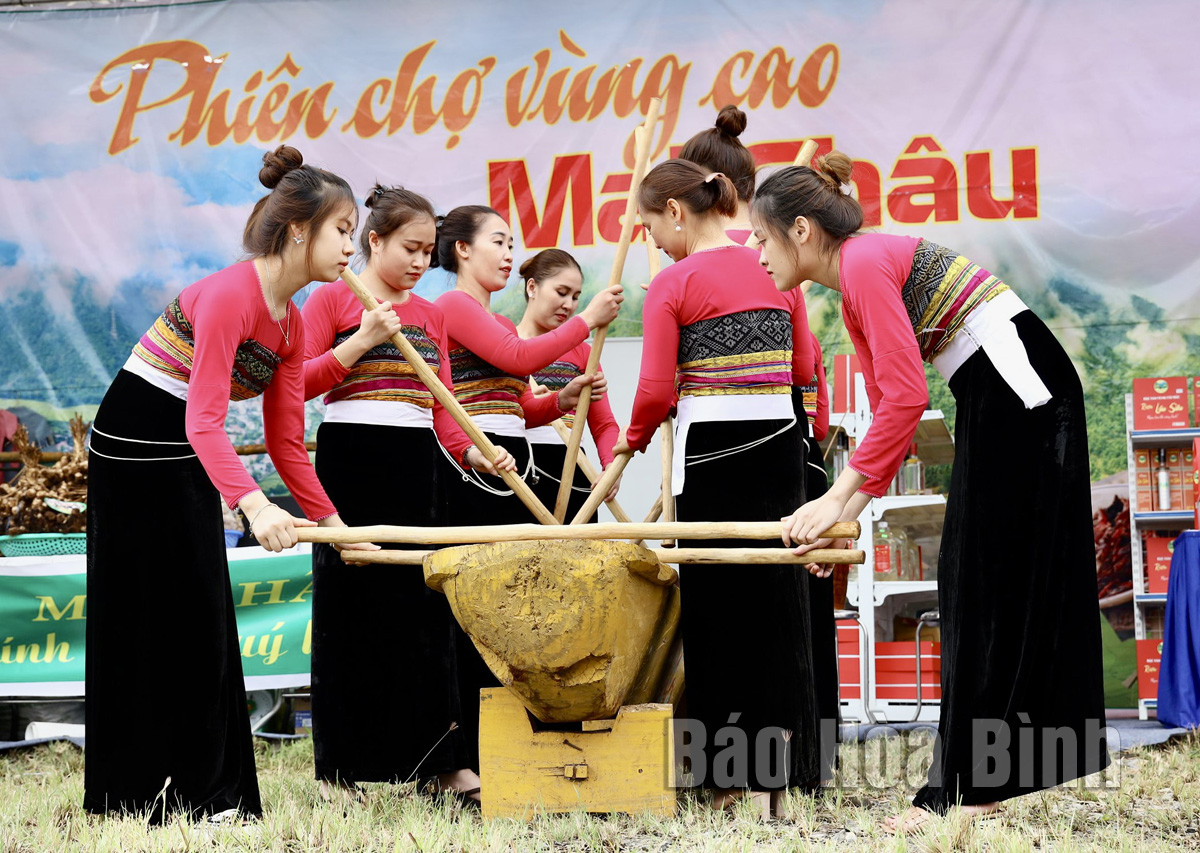
(HBO) - Mai Chau mountainous district is known as a concentrated residential area of the Thai ethnic group. Although in the modern life, it is rare to see images of people wearing traditional clothes every day, Thai culture is still permeated through words, voices, customs or the image of stilt houses, festival activities, and folk songs and dances.

‘Keng Loong’ dance performed by Thai girls in Mai
Chau to introduce and promote culture associated with tourism at the provincial
Mountainous Market in 2022.
Visiting communes such as Van Mai, Mai Ha, Mai Hich and Xam
Khoe, tourists can easily see Thai people's stilt houses following the ethnic
group's traditional architecture.
In addition to the poetic scenery, relaxing and peaceful
life and unique cuisine, the beauty of the Thai stilt house architecture has
its own charm, becoming one of the tourism products bringing great experience
to visitors when they explore and enjoy the traditional cultural space of Mai
Chau. Authorities of the hamlets, which still own many Thai stilt houses, have
paid attention to preserving cultural values to develop community-based
tourism, contributing to increasing locals' income. According to statistics,
about 80% of the Thai ethnic households live in traditional stilt houses.
Having an opportunity to attend the Great National
Solidarity Festival of residential areas in Tong Dau and Chieng Chau communes,
visitors will be fascinated by joyful Keng Loong dance which is popular in
community activities of the Thai people. Recently, on the occasion of the
provincial Mountainous Market Week in 2022, besides typical agricultural
products, district authorities increased the introduction and promotion of
ethnic cultures, especially the Thai one, through ethnic costumes, Keng Loong
performances, and traditional brocade weaving. These cultural characteristics
are also maintained by Thai people in different communes and towns. Many
community tourism villages such as:Van and Pom Coong - Mai Chau town; Lac -
Chieng Chau commune; Hich 1 - Mai Hich commune; Buoc - Xam Khoe commune; and Na
Phon and Nhot - Na Phon communes have exploited the potential of culture to
serve both domestic and international tourists.
According to Ha Thi Hoa, head of the district Culture and
Information Office, along with the awareness of preserving the Thai ethnic
cultural identity among the locals, district authorities have implemented many
measures to preserve and promote cultural values of ethnic groups, especially
linking the preservation and promotion of cultural identities with tourism
development./.
With an increasingly vibrant and widespread emulation movement aimed at building cultured residential areas and cultured families, Yen Thuy District has been making steady progress toward improving both the material and spiritual well-being of its people, while fostering a civilized, prosperous, beautiful, and progressive community.
Once lacking recreational spaces and community facilities, Residential Group 2 in Quynh Lam Ward (Hoa Binh City) has recently received attention for the construction of a new, spacious, and fully equipped cultural house. The project followed the model of state support combined with public contributions in both labor and funding.
The "All people unite to build cultural life" movement, which has been effectively integrated with Kim Boi district’s socio-economic development goals, is fostering a lively spirit of emulation across local residential areas, hamlets, villages, public agencies, and enterprises. In addition, through the initiative, traditional cultural values are being preserved and promoted, while community solidarity and mutual support in poverty reduction and economic development are being strengthened.
A working delegation of the Hoa Binh provincial People’s Committee led by its Permanent Vice Chairman Nguyen Van Toan on June 11 inspected the progress of a project to build the Mo Muong Cultural Heritage Conservation Space linked to tourism services in Hop Phong commune, Cao Phong district.
Born and growing in the heroic land of Muong Dong, Dinh Thi Kieu Dung, a resident in Bo town of Kim Boi district, in her childhood was nurtured by the sweet lullabies of her grandmother and mother. These melodies deeply imprinted on her soul, becoming an inseparable part of her love for her ethnic group's culture. For over 20 years, this love for her hometown has driven Dung to research, collect, and pass down the cultural values of the Muong people to future generations.
In the final days of May, the Ethnic Art Troupe of Hoa Binh Province organized performances to serve the people in remote, mountainous, and particularly disadvantaged areas within the province. These were not just ordinary artistic shows, but they were the meaningful journeys aimed at spreading cultural values, enhancing the spiritual life of the people and contributing to the preservation of ethnic minority cultural identities.



